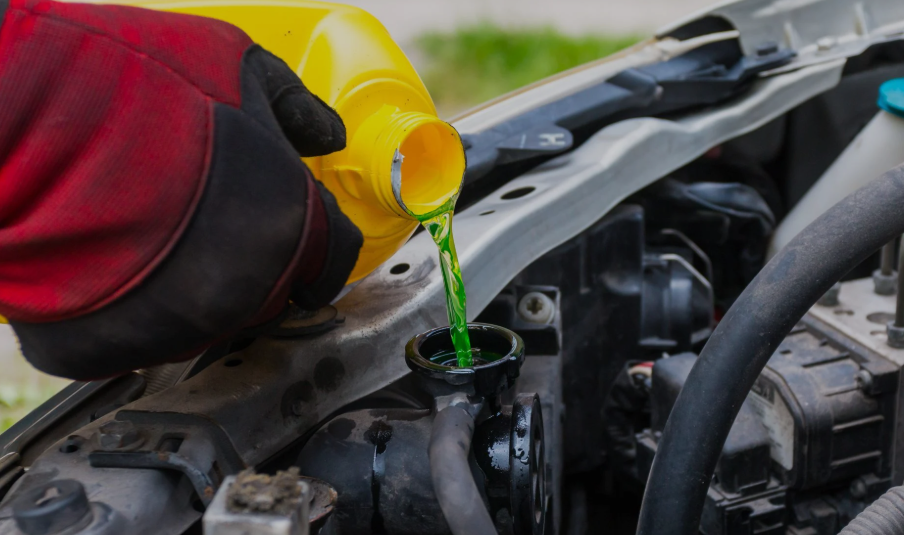Understanding Coolant Flush Cost: What You Need to Know
A coolant flush is an essential part of vehicle maintenance, but how much does a coolant flush cost? Understanding the price and factors that influence it can help you make an informed decision. If you’ve noticed your car overheating or the engine temperature fluctuating, it might be time to consider a coolant flush.
In this article, we’ll break down the coolant flush cost in 2025, explain why it’s important, and provide tips on how to keep your vehicle’s cooling system in top shape.
What is a Coolant Flush?
Before diving into the cost, let’s first understand what a coolant flush is. A coolant flush involves draining the old coolant from your vehicle’s cooling system and replacing it with fresh coolant. Over time, the coolant can degrade and accumulate contaminants, which can reduce the efficiency of your engine’s cooling system. A coolant flush helps to remove these impurities, restore the coolant’s effectiveness, and prevent the engine from overheating.

Why is a Coolant Flush Important?
A properly functioning cooling system is crucial to prevent engine damage. Without clean coolant circulating through your engine, the system could overheat, leading to costly repairs. A coolant flush ensures that the system runs efficiently, protecting your engine and enhancing its lifespan.
Factors Affecting Coolant Flush Cost
Now, let’s break down what influences the coolant flush cost. While prices can vary, several key factors will determine how much you pay.
1. Vehicle Make and Model
Different vehicles require different types of coolant and have varying cooling system capacities. For example, luxury cars or high-performance vehicles may have specialized coolant requirements, which can increase the price of a coolant flush. Similarly, larger vehicles like trucks or SUVs may have more complex systems, making the flush cost higher.
2. Type of Coolant
Coolant isn’t a one-size-fits-all product. There are different types of coolant, including organic acid technology (OAT), hybrid organic acid technology (HOAT), and inorganic acid technology (IAT). Some vehicles require specific types of coolant that are more expensive. The type of coolant used will significantly impact the cost of the flush.
3. Location and Labor Rates
Labor rates can differ depending on where you live. Mechanics in major metropolitan areas tend to charge higher rates compared to those in rural locations. The cost of labor also depends on the shop’s reputation and the experience of the technicians. High-end auto repair shops may charge more for a coolant flush due to their advanced equipment and expert technicians.
4. Frequency of Flushes
If you’re getting a coolant flush for the first time, you might pay a bit more due to the added complexity of draining and replacing the coolant. However, regular coolant flushes may cost less because the system is being serviced on a routine basis.

Average Coolant Flush Cost in 2025
So, what can you expect to pay for a coolant flush in 2025? On average, a coolant flush can cost anywhere between $100 to $150. However, this price can fluctuate depending on the factors mentioned above.
Budget-Friendly Options
If you’re on a budget, you might find that some auto repair shops offer discounted coolant flush services. Some shops even run promotions, so it’s worth checking if any deals are available. Additionally, some vehicle manufacturers recommend doing the flush yourself, which could save you labor costs.
Premium Services
For those who own high-end or luxury vehicles, a coolant flush may cost upwards of $200 to $300 or more. These prices reflect the use of specialized coolants, advanced diagnostic tools, and the expertise of the technicians.
Signs Your Vehicle Needs a Coolant Flush
Now that you know the potential costs, it’s essential to recognize when your vehicle might need a coolant flush. Here are some common signs:
1. Overheating Engine
One of the most obvious signs that your coolant is no longer doing its job is when your engine starts to overheat. If your temperature gauge is consistently in the red, it’s time to inspect the coolant and consider a flush.
2. Discolored or Dirty Coolant
Coolant should typically be bright green, orange, or pink, depending on the type. If you notice that the coolant in your reservoir has become dark or murky, it’s likely contaminated and may need to be flushed out.
3. Sweet Smell Inside the Car
If you smell a sweet, syrupy odor coming from the engine area, it’s a sign that coolant is leaking or burning, and a flush may be necessary.
4. Frequent Topping Off of Coolant
If you find yourself constantly adding coolant to your vehicle, it may indicate that the cooling system is compromised, and a flush is needed to restore proper function.
DIY vs. Professional Coolant Flush: Which is Right for You?
While some car owners opt for a DIY coolant flush, it’s generally recommended to leave this task to the professionals. A proper coolant flush involves draining the entire system, including the radiator, heater core, and engine block, which can be challenging to do correctly without the proper tools and expertise.
However, if you are handy with car maintenance, performing a DIY coolant flush can save you money. Just ensure you follow the manufacturer’s instructions and use the right type of coolant for your vehicle.
How to Save on Coolant Flush Cost
If you’re looking to reduce your coolant flush cost, here are a few strategies:
1. Routine Maintenance
By keeping up with regular maintenance, you can avoid bigger, more expensive issues down the road. Follow your vehicle manufacturer’s recommendations for coolant flush intervals to ensure your system is running smoothly.
2. Shop Around for Discounts
Before scheduling your coolant flush, it’s worth getting quotes from different auto shops. Many mechanics offer discounts or seasonal promotions, which could help reduce the cost.
3. Check Your Owner’s Manual
Your car’s owner’s manual will provide guidelines on when and how to flush the coolant. Following these instructions can help you avoid unnecessary flushes and ensure you’re not paying for services you don’t need.
Conclusion: Is a Coolant Flush Worth the Cost?
A coolant flush is an essential investment in maintaining your vehicle’s engine health. Whether you’re dealing with overheating issues or want to extend your car’s life, flushing the coolant regularly is a smart decision. While the coolant flush cost can vary depending on factors like your vehicle’s make and model, the type of coolant, and where you live, it’s generally an affordable service that can save you from much larger repair costs in the future.


[…] this article, we will explore the factors that affect cooling fluid cost, discuss how to choose the right fluid for your needs, and provide actionable tips to save on your […]